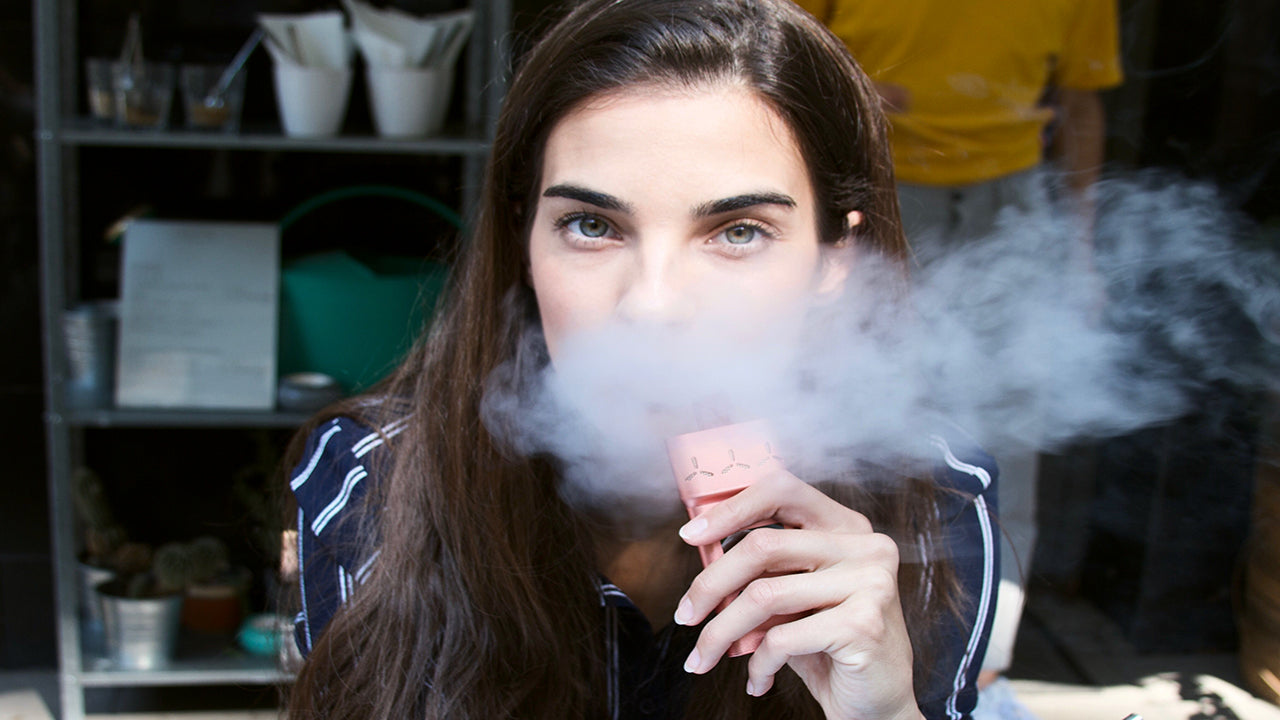Choosing the Right Nicotine Strength for You

This article aims to differentiate between nicotine and nicotine salts which are both great options. It’ll help you find the perfect nicotine strength for your needs. After you’ve learned how to convert the percentage to mg per mL, you will never waste money on the wrong e-liquid again.
Nicotine is one alkaloid found in Nicotiana tabacum which is simply known as a tobacco plant. Some have also produced it through synthetic means but since it’s expensive that way, it’s not common. Nicotine is usually thought of as derived from tobacco plant alone, but traces of it can also be found in potatoes, eggplants, and tomatoes.
Nicotine can both work as a stimulant or a relaxant. Some people have experienced calming effects while others have become more alert and experienced elevated moods. Most people consider it addictive, psychologically and physically. This is the reason why smokers who turned into vapers use different nicotine levels. Commercial e-liquids are available without any nicotine, but they’re usually available in different nicotine strengths.
But heads up, the information we are sharing in this article are based on the nicotine strength usually found in commercial e-juices. DYI e-juices and mixes might include diluting nicotine in the process.
Regular Nicotine vs Nicotine Salt
Regular nic has no additives, unlike nic salt. Your body absorbs it slower and it can be harsh when taken in high concentration. The flavor is much more complex and it’s ideal for cloud chasers. It’s available in low to medium strengths at affordable prices. Regular nic is highly recommended no matter what your vaping style is.
On the other hand, nic salt has benzoic acid in the mix. It is absorbed faster and therefore the effects come sooner. It’s not harsh but instead satisfying in high concentrations. The flavor and cloud production is lower than that of the regular nic. This type is more pricey and recommended for smokers and MTL users.
Nic salt e-liquid has introduced a better alternative to smokers who want to quit for good. Thanks to the addition of benzoic acid, the vapor produced by nic salts are much smoother when it hits the throat, thus, high concentrations become tolerable.
The Best Strength of Nicotine
For new vapers, you have to consider two factors before you decide on a nicotine strength: vape device you have in mind and how many sticks of cigarettes you are used to.
If you finish 10 sticks a day, you need lower nicotine strength. If you often finish a pack, it’s medium nicotine strength for you. And if you go beyond a couple of packs, that’s equivalent to high nicotine strength.
These are just estimations, but still, it has helped a lot of people determine the nicotine strength that’s perfect for them. Don’t hesitate to test other nicotine strength as long as you start with the lowest to spare you from overdosing. Finding the ideal nicotine strength will help you stay away from cigarettes for good.
Low Vapor
Low vapor is equivalent to the amount of smoke that cigarettes produce. Most vape devices fall in this category along with mouth-to-lung tanks (MTL) that have narrow airflow.
Nicotine salts that have a high percentage are winners in this category ever since the halt in production of nicotine juices with more than 6mg/mL.
Regular nicotine has 9-18 mg/mL while nic salts usually have between 30 and 60mg/mL.
Medium Vapor
Medium produces enough clouds. A wide range of vape devices can be classified under this category: airier mouth-to-lung tanks, sub-ohm coils including ones with very limited lung draw.
Regular nicotine contains 6 to 9mg/mL.
Nicotine salts have 20 to 30mg/mL.
High Vapor.
Full thick clouds can be created by rebuildable atomizers (RBAs) that feature huge airflow system and powerful sub-ohm tanks. Most vapers use nicotine juices as nic salts that produce dense clouds aren’t easy to find.
Regular nicotine has 1.5mg/mL at minimum and 6 at maximum.
Nic salts will have 10mg/mL at maximum.
We advise smokers who are new to vaping to try a vapor device with low vapor production as they emulate the smoke from cigarettes. It’ll be easier to get through the transition stage this way. Check out pod systems and MTL tanks.
Percentage to mg/mL
Some companies label their products in percentage: 5%, 2.5%, 0.6%, and 0.3%. And others are kind enough to write it on mg/mL. What’s the difference?
Nicotine strength displayed in mg/mL is saying that you get you an exact level of nicotine in every millimeter. That goes on to say that a 6mg/mL e-liquid has 6mg nicotine per millimeter. So you can easily compute how much nicotine there is in the bottle or tank by simply multiplying the strength by the milliliters.
Therefore, a 5mL tank with 6mg/mL e-juice: 5mL multiplied by 6mg/mL equals 30mg nicotine in the tank.
It’s quite similar even if the strength is shown in percentage. Percentage uses both mass (indicated in mg) and volume (indicated in mL). The percentage tells you how much nicotine percentage there is in the bottle.
So an e-juice with 1.2% has 1.2% nicotine content and the remaining 98.8 is what makes up the PG/VG and flavorings.
Converting
It’s easier to convert from mg/mL to percentage. Simply divide the mg/mL by 10. For example’s sake, a 6mg/mL e-liquid has 0.6% while a 72mg/mL has 7.2% concentration.
If you’re shown with a nicotine strength in percentage but you want to know its equivalent mg/mL value simply multiply it by 10. That’s about it.
No More Wasted Money on Wrong E-Liquids
Now that you know how to convert back and forth, you can buy the perfect vape juice with the right nicotine strength to cater your cravings and needs. You now have the knowledge about the difference between mg/mL and percentage.
If you still find it confusing, don’t worry. A little more practice and you’ll be able to buy from any manufacturer whether they have the nicotine strength displayed in milligram per millimeter or percentage. We hope that this article guides you to the best nicotine strength.


